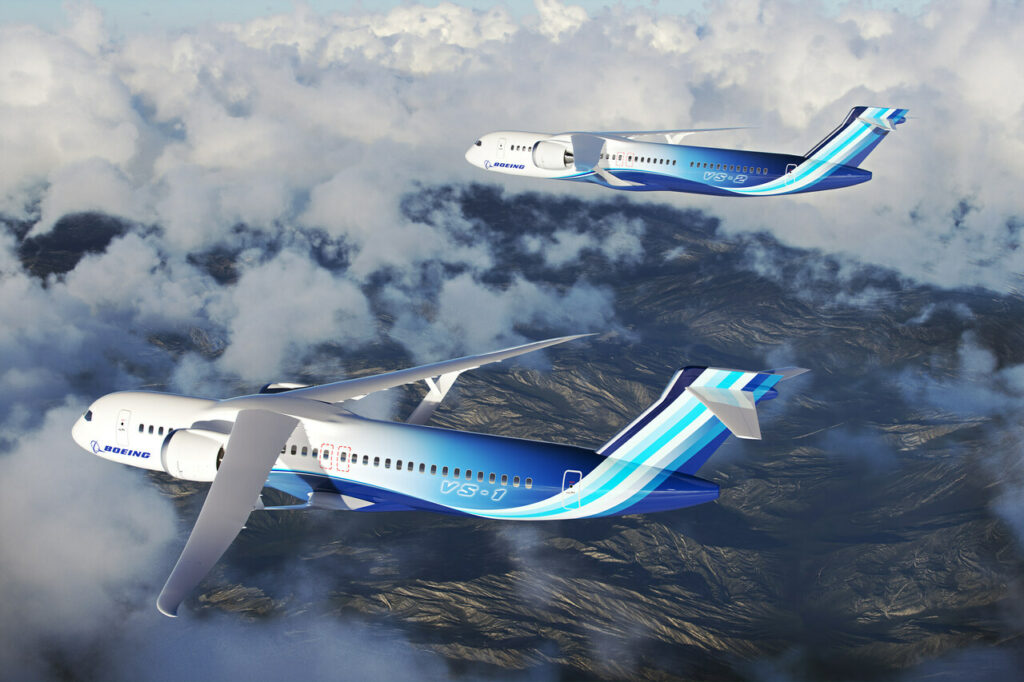LONDON – The US National Aeronautics and Space Administration (NASA) has selected Boeing and its industry team to lead the development and flight testing of a full-scale Transonic Truss-Braced Wing (TTBW) demonstrator airplane.
Sustainable Flight Demonstrator programme
The technologies demonstrated and tested as part of the Sustainable Flight Demonstrator (SFD) program will inform future designs and could lead to breakthrough aerodynamics and fuel efficiency gains.
When combined with expected advancements in propulsion systems, materials and systems architecture, a single-aisle airplane with a TTBW configuration could reduce fuel consumption and emissions.
The expected reductions gained through the technology would be up to 30% relative to today’s most efficient single-aisle airplanes, depending on the mission.
The SFD program aims to advance the civil aviation industry’s commitment to reaching net zero carbon emissions by 2050, as well as the goals set forth in the White House’s U.S. Aviation Climate Action Plan.
“The SFD program has the potential to make a major contribution toward a sustainable future,” said Greg Hyslop, Boeing chief engineer and executive vice president of Engineering, Test & Technology.
“It represents an opportunity to design, build and fly a full-scale experimental plane, while solving novel technical problems.”
The Boeing design
Ultrathin wings braced by struts with larger spans and higher-aspect ratios could eventually accommodate advanced propulsion systems that are limited by a lack of underwing space in today’s low-wing airplane configurations.
For the demonstrator vehicle, Boeing will use elements from existing vehicles and integrate them with all-new components.
NASA’s funding through the SFD Space Act Agreement totals $425 million. The SFD program will also leverage up to $725 million in funding by Boeing and its industry partners to shape the demonstrator program and meet the resource needs required.
Separately, Boeing’s previous internal investments for recent phases of sustainable aviation research total $110 million.
The TTBW airframe concept is the result of more than a decade of development supported by NASA, Boeing and industry investments.
Under previous NASA programs including the agency’s Subsonic Ultra Green Aircraft Research program, Boeing conducted extensive wind tunnel testing and digital modeling to advance the design of the TTBW.
Early conceptual studies started under NASA’s Environmentally Responsible Aviation program.
About the NASA SFD project
The purpose of the Sustainable Flight Demonstrator project is to engage with industry, academia, and other government organizations to identify, select, and mature key airframe technologies, such as new wing designs, that have a high probability of transition to the next generation single-aisle seat class airliner.
This project is one of the key components of the Sustainable Flight National Partnership.
The project will be a large-scale flight demonstrator with objectives to lessen commercial aviation’s impact on climate change through reduced fuel burn and carbon dioxide emissions.
The aircraft, notionally planned for first flight no earlier than 2027, will prove the benefits of new aircraft technologies for use in the next generation airliner expected in the 2030s.
Concern over climate change has created an opportunity to target new aircraft technologies for the next generation of single-aisle airliners which account for greater than 50% of worldwide aviation emissions.
NASA has been working with industry on advanced commercial airframe configurations for more than 20 years to reduce fuel burn, emissions, and noise.









